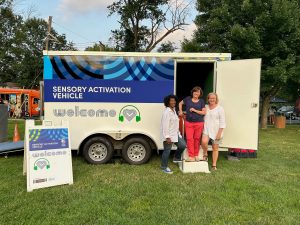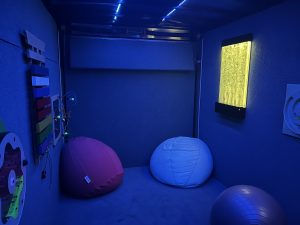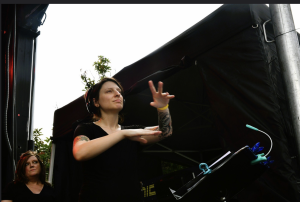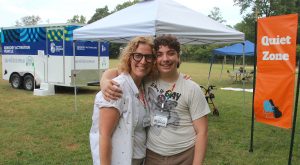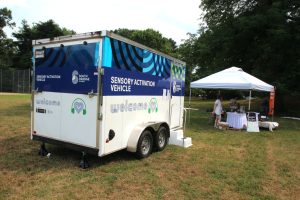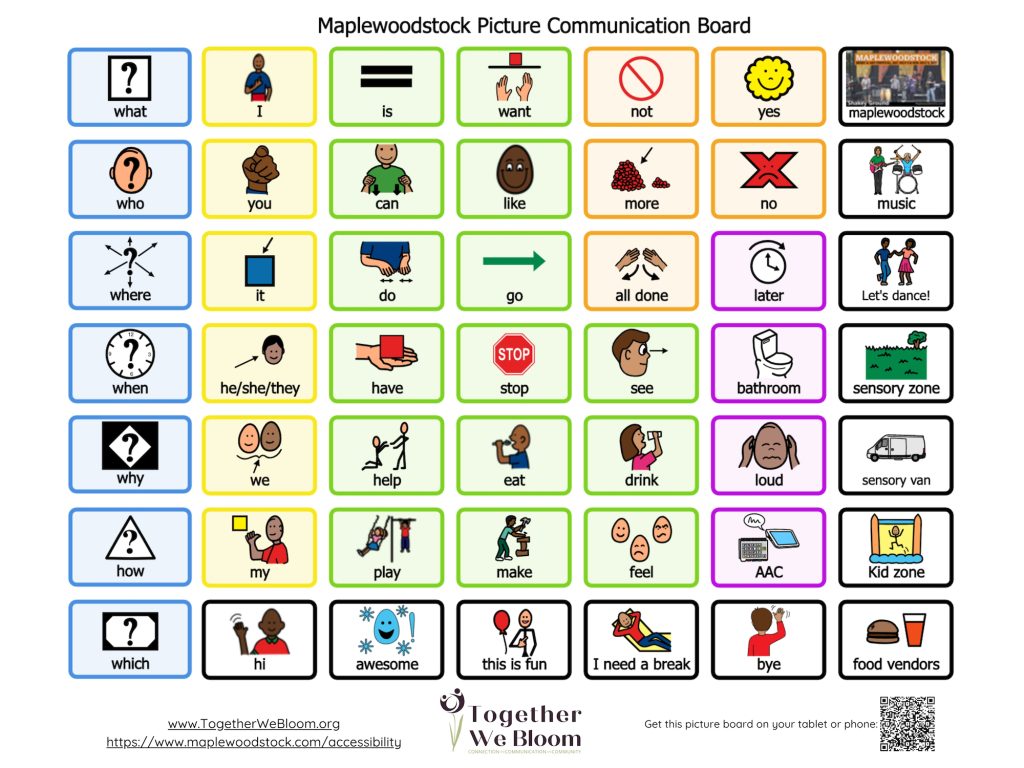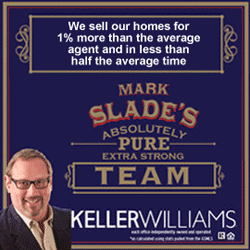Maplewoodstock partners with local non-profit Together We Bloom to prioritize and strengthen disability inclusion and accessibility at this year’s event. SOMA’s diversity is its strength, and this includes neurodiversity and disability. The Maplewoodstock Festival has long been committed to providing an event “OF and FOR the community” — which includes listening and learning from our friends and neighbors in the disability community.
Find details about each of these accessibility and disability inclusion supports below:
- Maps and programs showing the locations of the below access supports (available below and on our Map Page)
- Social Stories for kids and adults
- Picture Communication Board
- Sensory-Friendly Zone and Sensory Accessibility Information
- Sensory Activation Vehicle
- ASL interpretation with “Deaf Access Area”
- Accessible Seating Tent for disabled and senior attendees in partnership with SOMA’s Two Towns for All Ages
- Physical accessibility information including accessible toilets
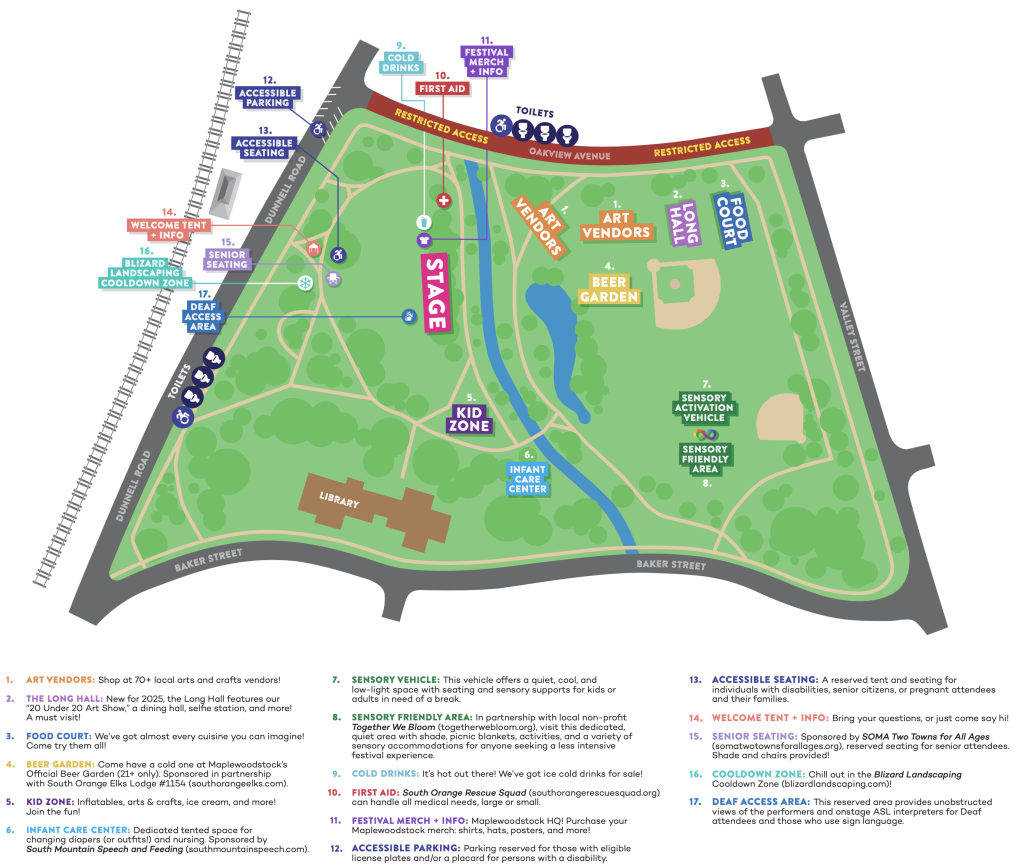 Maplewoodstock Social Stories
Maplewoodstock Social Stories
Social stories/social narratives are first-person narratives written to introduce a new, unexpected, or challenging situation with concrete language and pictures. They help the reader know what to expect and provide options for support.
Anyone can benefit from learning about situations ahead of time but social narratives are often particularly helpful for neurodivergent individuals including Autistic people or people with anxiety.
Social narratives should be used as a tool to empower and support inclusion and access, not to force compliance with social norms.
The online version and the downloadable PDF version include alternative text for images for accessibility with screen readers for the Blind and individuals with low vision.
These accessibility resources are free to download. If you’re able, please consider a donation to Together We Bloom, so that they may continue their work to make our community more inclusive.
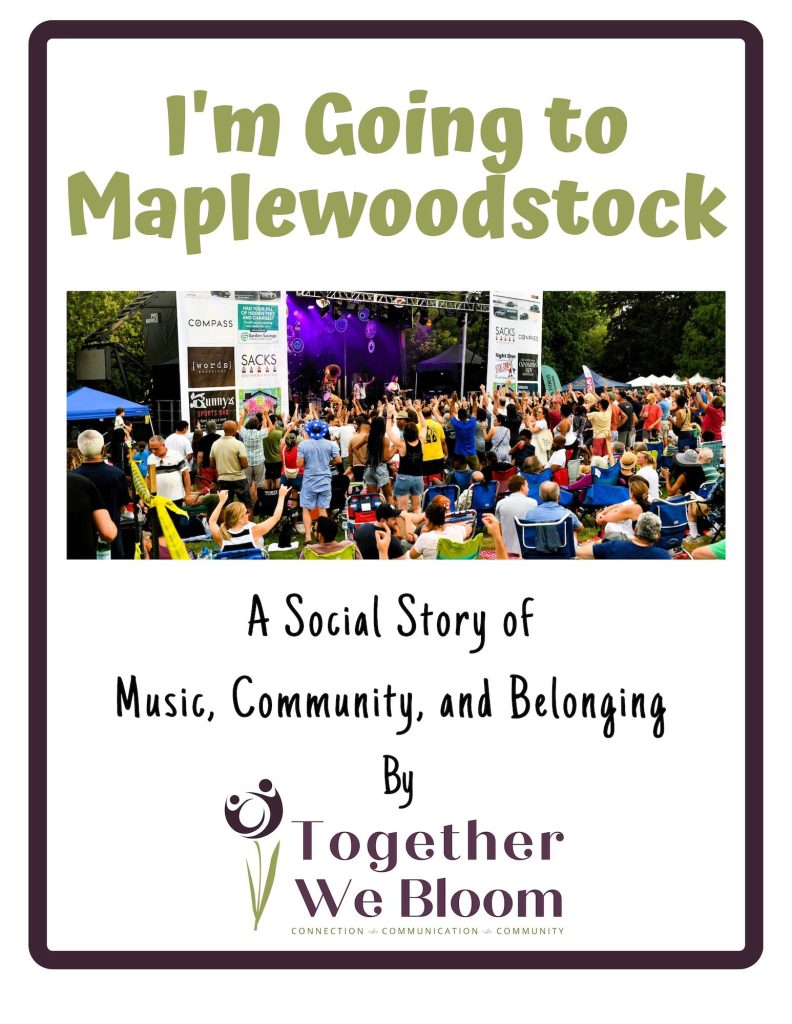
- Download PDF of Adults/Adolescents version or view online
- Download PDF of Kids version or view online
Maplewoodstock Communication Board
Some individuals with intellectual, communication, or developmental disabilities use or benefit from Alternative and Augmentative Communication (AAC) to support their language comprehension and expression, such as communication boards, speech-generating devices, or sign language. Some people who use spoken language some of the time, may prefer alternative communication during a sensory-intense or overwhelming experience like a music festival.
Communication partners can model and use this Maplewoodstock communication board by pointing to the pictures as you talk about the festival both before and during the event. An individual should never be required to point to the board, but communication partners can model and provide opportunity.
Downloadable PDF version includes alternative text for images for accessibility with screen readers for the Blind and individuals with low vision.
These accessibility resources are free to download. If you’re able, please consider a donation to Together We Bloom, so that they may continue their work to make our community more inclusive.
Sensory-Friendly Zone and Sensory Accessibility Information
The sensory-friendly zone, strategically placed away from the live stage and crowded areas, provides a less-intense, more sensory-friendly experience to support neurodivergent or disabled attendees or anyone with sensory-sensitivities. This area will include a canopy tent and ample shade with room to sit in the shade or to move around to help meet a variety of sensory needs and preferences. Kids and adults are welcome to come and stay as long as they like. Picnic blankets, fidgets, and ear defenders will be available to borrow. For an even quieter, low-light environment, the sensory vehicle will be parked nearby or anyone who needs a break from the crowds or noise.
This area will include:
- Tents for shade, open space away from crowds, and a quieter experience of the music
- Picnic blankets, chairs
- Solo or group activities: Art supplies, games
- Regulation station: ear defenders or fidgets to borrow
- Sensory vehicle (see below)
All are welcome to come and stay as long as they like. This area is open throughout the whole festival, noon to about 10 PM. The sensory-friendly zone is hosted by Together We Bloom.
General Festival Sensory Accessibility Information
Maplewoodstock is a music festival that typically draws large crowds, often exceeding 10,000 attendees over two days.
- The busiest times are generally in the evening and at night, from approximately 5 PM to 10 PM.
- Early afternoons (12 PM to 5 PM) tend to have slightly smaller crowds.
- The area directly in front of the stage is usually the most crowded and loudest.
Sensory Activation Vehicle
To increase the accessibility of the event for neurodivergent individuals, the sensory-friendly Sensory Activation Vehicle (SAV) will be parked in the field behind the stage and over the walking bridge in the sensory-friendly area. The SAV has low lighting, reduced sound, and regulating tools and toys to provide a quiet space for individuals with disabilities and sensory differences.
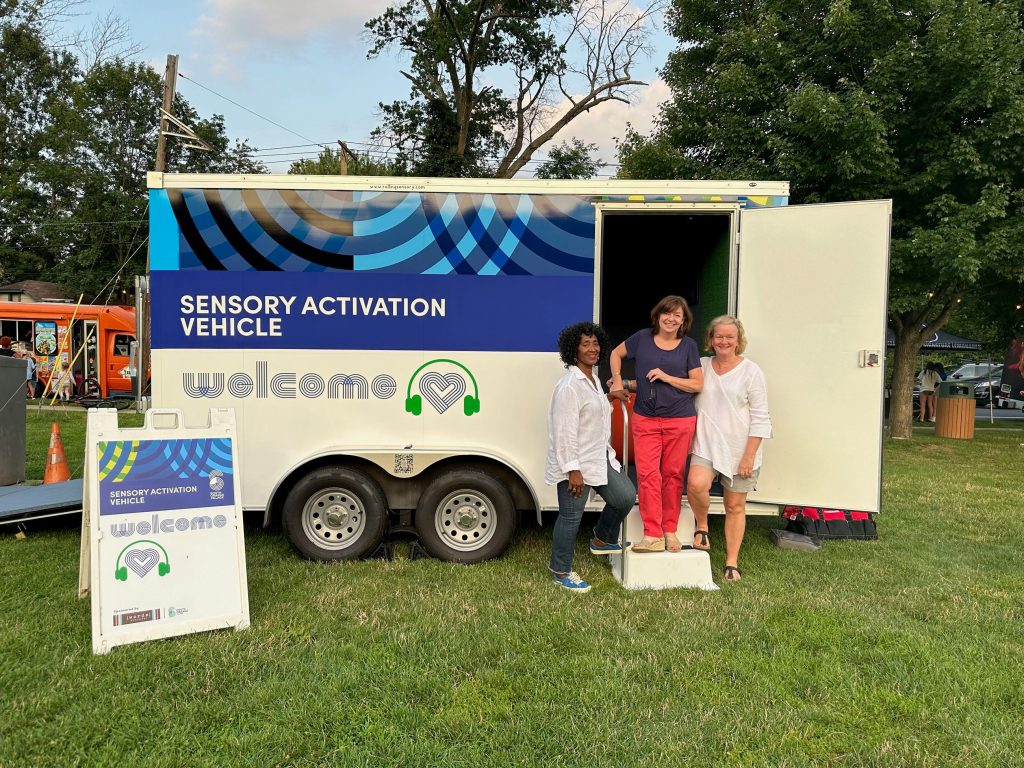 ASL Interpretation and Deaf Access Area
ASL Interpretation and Deaf Access Area
The festival will be accessible in American Sign Language (ASL), with onstage Sign Language Interpreters for the full duration of the event for anyone who is Deaf or uses sign language to communicate.
The Deaf Access Area is directly in front of the stage (to the right side when facing the stage) and allows unobstructed visual access to the ASL interpreter and performers on stage.
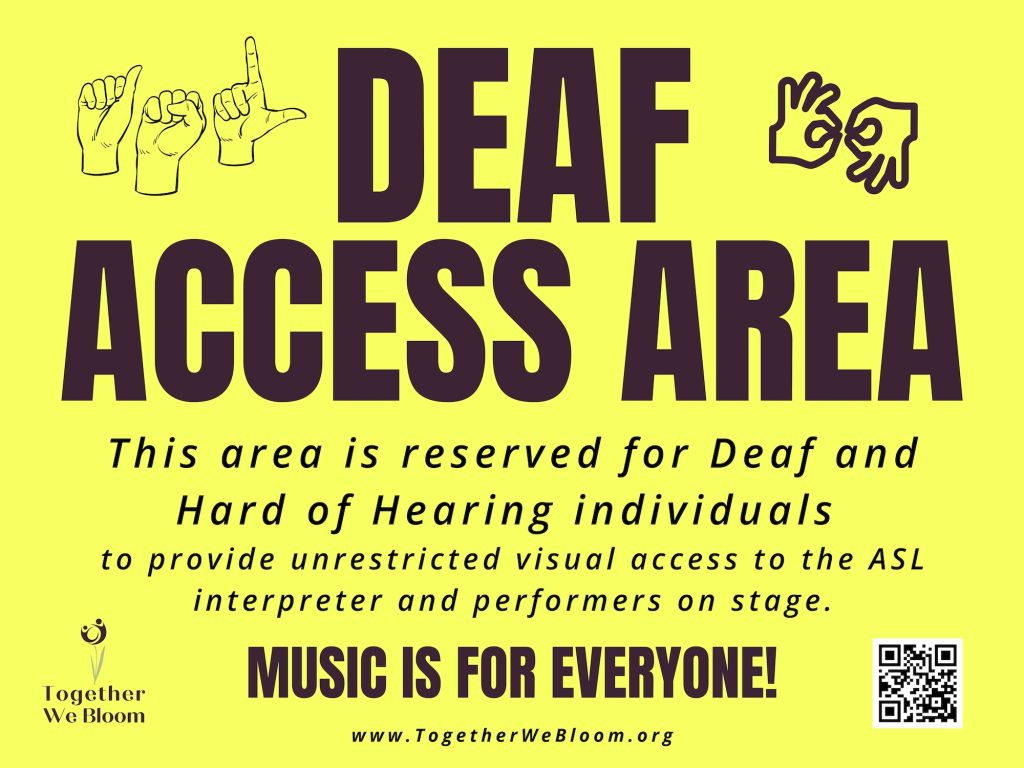 Physical Accessibility
Physical Accessibility
Maplewoodstock is held in Memorial park in Maplewood which is a large, grassy park with paved walkways throughout.
The viewing area in front of the live stage is mostly on a grass hill but there is a flat grass area directly in front of the stage. The area on the top of the hill across from the train station, by the accessible seating tent, is mostly flat with paved paths and grassy areas.
The paved walkways in the park are visible on the festival map. While paved paths do provide access to all areas of the festival grounds between all areas of the festival grounds are on grassy fields.
Accessible parking and toilets are available and indicated on the map.
The music stage is at the foot of a natural grass sloped park amphitheater. Paved sidewalks and walkways (with some curb breaks) are at the perimeter of the park along Dunnell Road and Oakview Ave.) See our map.
Accessible Seating Tent
This tent, located adjacent to the accessible parking, has space and seating reserved for individuals with physical disabilities, senior citizens, or pregnant individuals (and their families) with a direct view of the stage. This is presented in partnership with SOMA Two Towns for All Ages.


